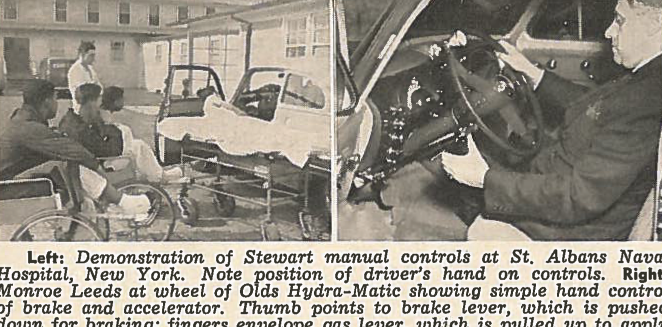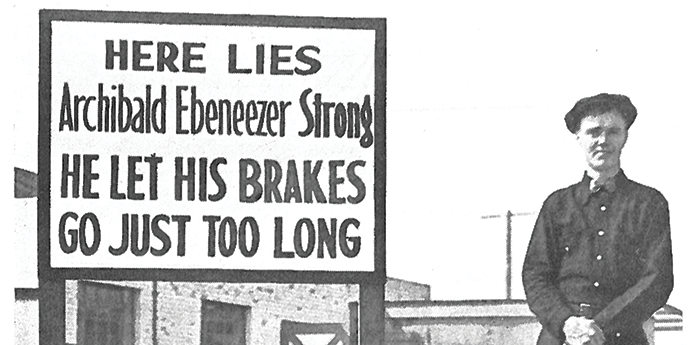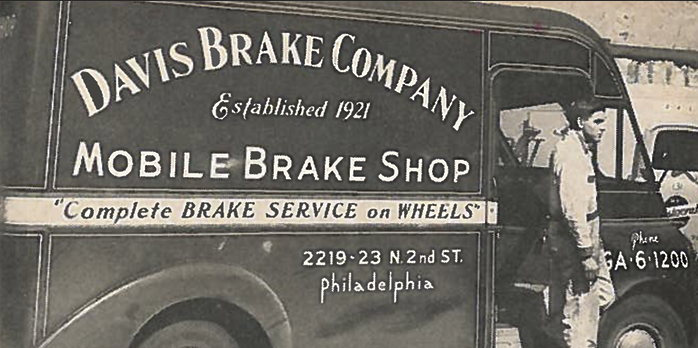Understanding Wheel Bearing Seals
A seal must always be installed so that the sealing lip is facing the fluid to be sealed. This is because the lip is made so that pressure applied to it from the “wet” side of the seal will tend to increase the pressure the lip applies to the shaft. If the seal is installed backwards, pressure acting on the “wrong” side of the lip will cause it to lift from the shaft, resulting in leakage. On most seals, the correct side is obvious; however, on others it is not.
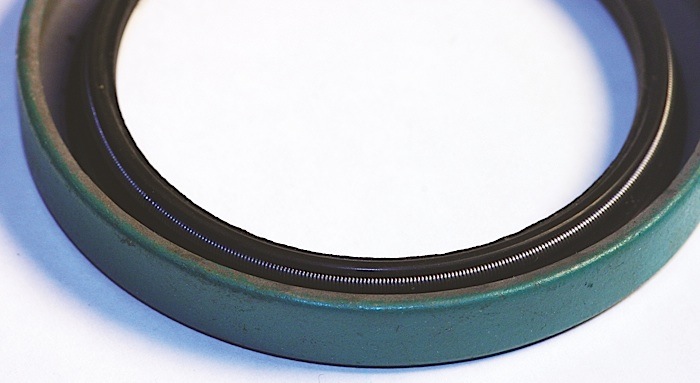
BRAKELIGHT: 1953 Pontiac (March 1953)
With the “Wide Track” design five years away, it is amazing to see just how much body roll was considered normal. The main difference in the 1953 was a lower roll center and longer control arms.
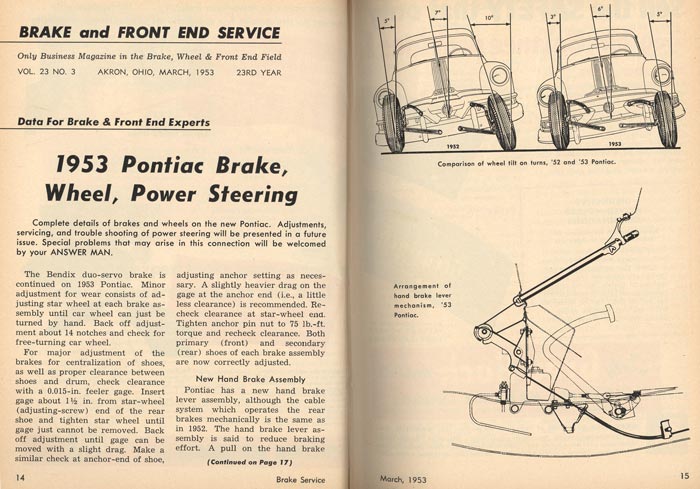
BRAKELIGHT: The Car Cradle (March 1986)
Some ideas just never catch on… I wonder if the Car Cradle paid for itself by shaking out the coins that were trapped in the seats? The ad claims that there is no oil in your face. I think the inventor forgot that most vehicles are filled with fluids and oils that can leak out
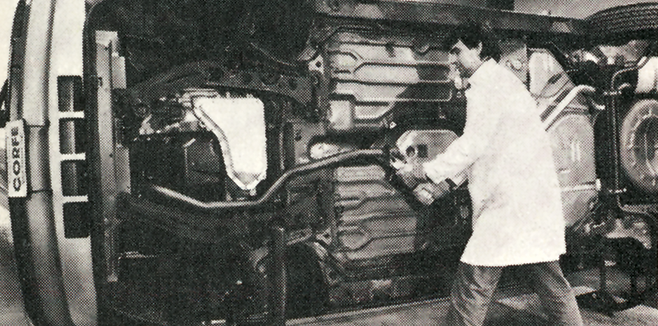
BRAKELIGHT: Beware the Brake Racketeer (1932)
In the 1930s, brake services like relining and adjustments were performed more often than oil changes. Most vehicles with mechanical brakes required adjustment every 1,000 miles to make sure they stopped straight or even stop at all. Shops were being forced to compete with people who performed brake repairs in backyards and at the side of
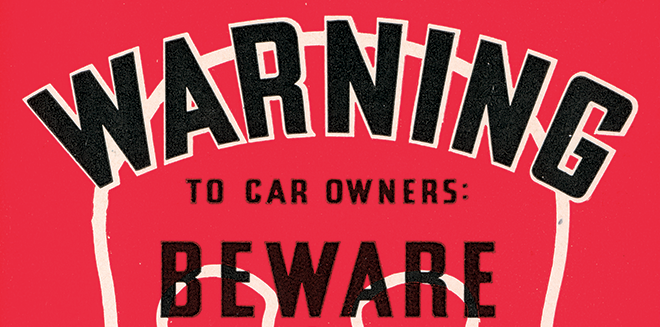
BRAKELIGHT: The Tale of Sam & Joe (December 1961)
Quality art never goes out of style. OK, so maybe you don’t remember “The Reluctant Student” from the December 1961 issue of Brake & Front End, but the message is as important now as it was then — maybe even more so. In the cartoon, we have Joe, who is content with his book of
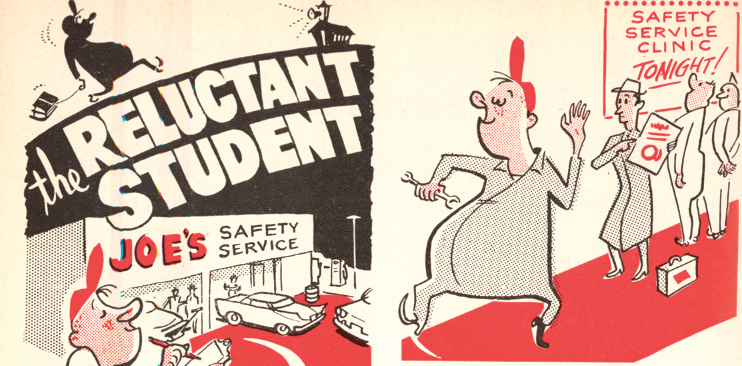
BRAKELIGHT: BFE Sponsors Soapbox Derby
In the summer of 2013, Brake & Front End sponsored a soapbox derby car for the National Super Kids Classic. Held in conjunction with the All American Soapbox Derby, the National Super Kids Classic is for disabled children to race at one of the most iconic American sporting events. Sponsoring a racecar or sports team can
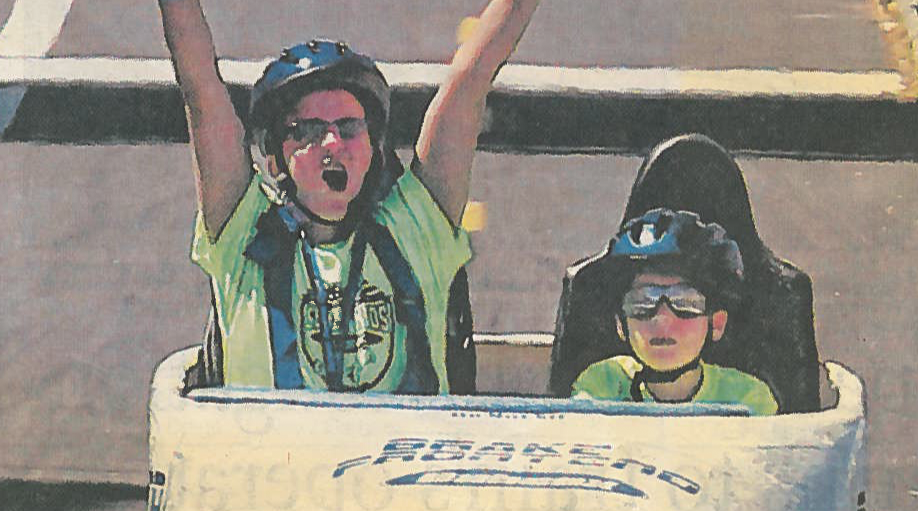
BRAKELIGHT: Gone Vanning (March 1979)
In the 1970s, “Vanning” was a trend that no one could really explain. Most early vans were all about the interior that was usually covered in shag carpet. By the end of the decade, vanners wanted more. The answer was to put a 4×4 drivetrain on a van and go off road. By 1981, vanning
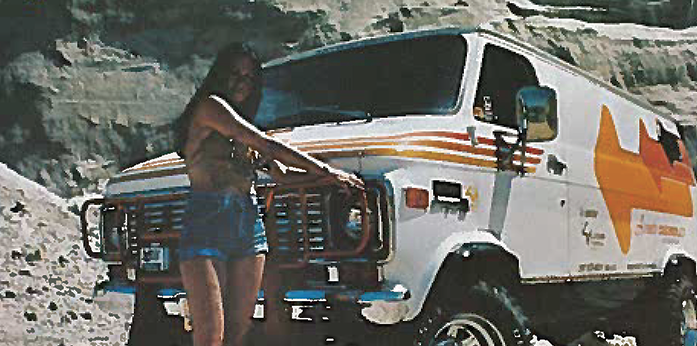
BRAKELIGHT: Spiffs from the 1970s (1976)
A spiff, SPIF (Sales Performance Incentive Fund) or spiv is typically given by a manufacturer or distributor for selling a specific product or for buying an assortment of parts. Special spiffs have been around since the start of Brake & Front End. Products that could be used outside of the shop were a little more
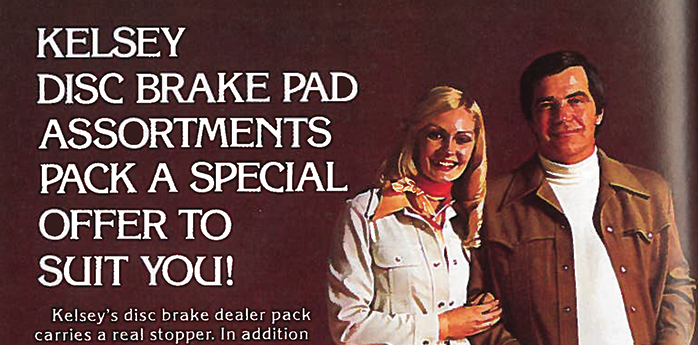
BRAKELIGHT: Children in Advertising (1937)
Using fear to sell safety components like brakes is nothing new. But Amco broke new ground when it used children in advertising to enhance its safety message.
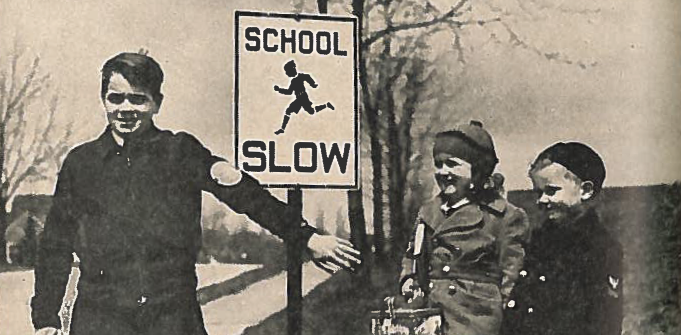
BRAKELIGHT: Ford Helps Disabled Veterans (June 1951)
More than 250,000 soldiers were wounded in WWII. Some of them could not operate a car using the normal controls. Car makers and shops realized that they had a debt to pay to these veterans. When new cars could be bought after the war, just about every automaker offered hand controls at no extra cost.
